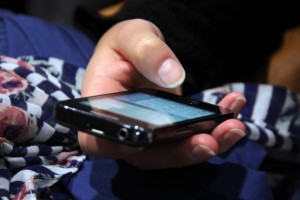A new study analyzing the prevalence of distracted driving captured video of several thousand motorists moving along a South Florida highway. In just 20 minutes, study authors found:
- 150 drivers talking on the phone;
- 17 drivers texting;
- 12 drivers eating;
- 6 drivers distracted by some other form (i.e., reading, applying makeup, staring at the mirror, looking in the backseat, etc.)

What that tells us is that of the 2,000 cars that went by, 9 percent of drivers were preoccupied with some task other than driving. That’s probably a low number because it only counts those distractions that are actually observable. Distractions such as listening to the radio or having an involved conversation with a passenger are not immediately observable from the outside. Again – this was on a highway, where speeds easily exceed 70 mph. Bear in mind that when you take your eyes off the road to send a text while traveling at 55 mph, you travel the length of a football field without looking.
The report, published by www.sr22agency.com, revealed a total of 185 distracted drivers on I-95 in just 20 minutes. It’s a wonder there weren’t more car accidents.
The results are not all that shocking, given the statistics reported by the National Highway Traffic Safety Administration (NHTSA) last year. Of the 30,057 fatal crashes in 2013, a total of 2,910 involved distraction. Again, these are only the distractions about which we know. Distraction is not as easily a quantifiable phenomenon as, say, impaired driving, which can be determined by a simple blood test.
Distracted driving crashes reportedly killed 3,154 people in 2013 – 10 percent of the total 33,000. It’s also a factor in 18 percent of all crashes with injuries and 16 percent of all total crashes.
Of the distractions listed in that report:
- Talking on a cellular phone;
- Manipulating a cellular phone (i.e., texting)
- Using other component/ controls;
- Distracted by outside event or person;
- Smoking-related;
- Eating or drinking;
- Lost in thought/ daydreaming.
In the SR22Agency report, researchers broke down the observed distractions this way:
- 81.08 percent were talking on the phone
- 9.19 percent were texting
- 6.49 percent were eating
- 3.24 percent were engaged in “other” distractions
The problem goes well beyond this single stretch of South Florida highway. April is Distracted Driving Awareness Month, and it’s important for drivers to understand the dire consequences of these actions. Consider that it’s not even the amount of time you are looking at the phone or texting. Research has shown that the brain remains distracted for nearly 30 seconds after sending a voice command text, dialing or changing music.
We have all seen drivers we knew were distracted, but there are many more who are distracted and it isn’t obvious. Worse, many don’t realize when the distracted driver is themselves.
The U.S. Centers for Disease Control and Prevention (CDC) reports 70 percent of drivers between the ages of 18 and 64 admit they have talked on their phones while driving in the last 30 days. Another 30 percent admitted they had texting while driving. Again, this is self-reported so the actual number is probably even higher.
Although an increasing number of states do ban texting while driving, many say it is not enough – clearly, as so many people still do it and so many people are still being maimed and killed just so a driver doesn’t miss a call.
Call Associates and Bruce L. Scheiner, Attorneys for the Injured, at 1-800-646-1210.
Additional Resources:
The Hazards of Distracted Driving, April 2016, SR22Agency
More Blog Entries:
Rish v. Simao – Low-Impact Defense in Car Accident Lawsuit, March 18, 2016, Fort Myers Car Accident Attorney Blog
 Florida Injury Lawyer Blog
Florida Injury Lawyer Blog





